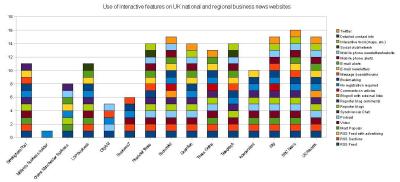So today we spent the day with Jeanne Hill learning about the art of good marketing and about the need to get editorial and marketing departments in newspapers talking to each other more.
I think it has become a universial stereotype that marketers and journalists are hardly the perfect image of interdepartmental communication bliss. Journalists often mistake marketers for salespeople and take a “holier than thou” attitude to their supposed editorial integrity. Marketers, I think, assume editorial are incapable of grasping much more than a pen and paper, when it comes to the fundementals of running a newspaper.
But, of course, we’re all in the same business and today was a great insight into how marketing can be used to better understand and then target a readership.
We also assessed the way in which readers are referred to in the newsroom. This sparked a conversation on Seesmic where I asked the community how they wanted to be percieved by journalists (wish this would embed).
Some very interesting repsonses are here (Documentally), here (solobasssteve), here (Pete Ashton), here (Cataspanglish) and here (Hache). There were many more that raised very interesting points, but you’ll have to log onto Seesmic to see the full conversation!
What comes out a lot is that if a reader feels even slightly as if a journalist is not respecting the reader then they will simply go elsewhere. There is an acceptance that objectivity is a myth and that social media provides an opportunity to critique journalists and build a relationship with them, which then provides context to their work.
Obviously most of these guys (and they are all guys) are early adopters, but it was certainly an interesting exercise.


 I’ve been putting off this post because it covers so many things I hardly know where to start.
I’ve been putting off this post because it covers so many things I hardly know where to start.